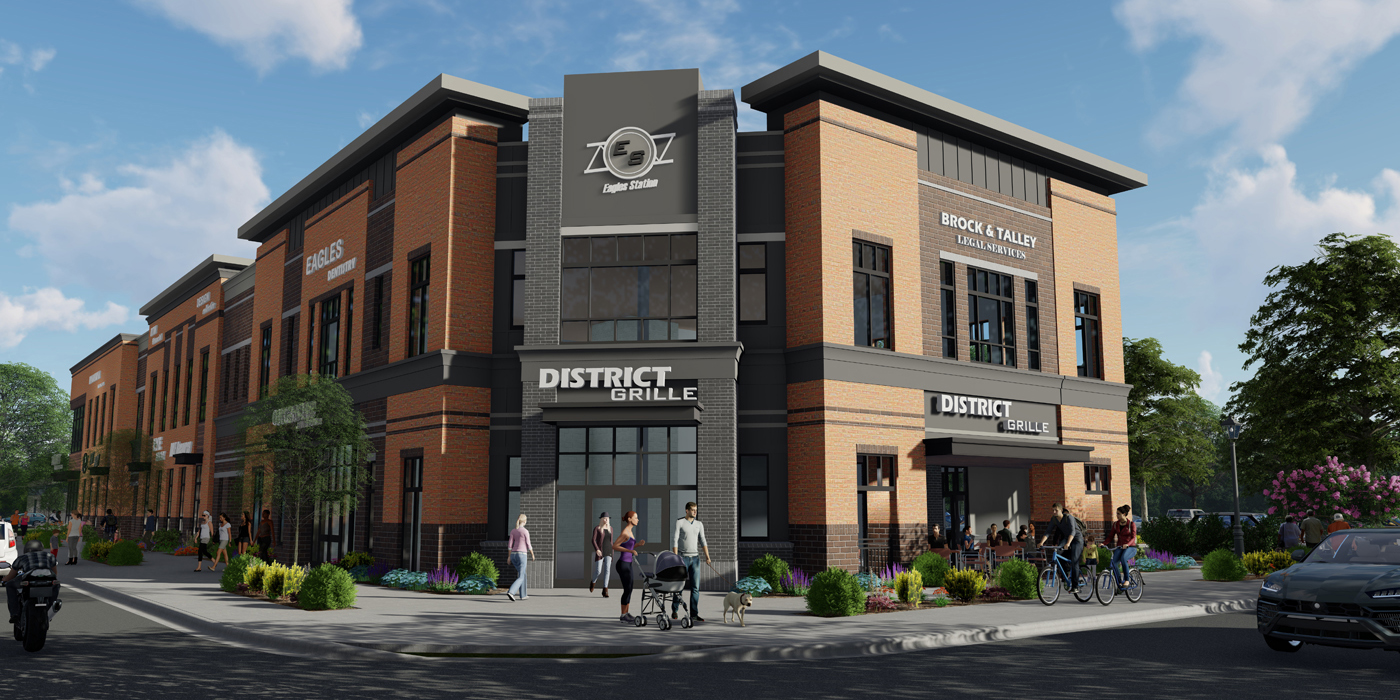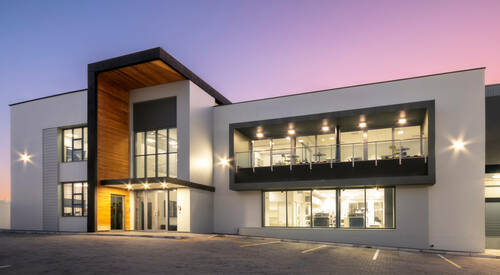7 Questions to Ask commercial architects
Wiki Article
Revealing the Comprehensive Services Offered by Commercial Architects for Modern Developments
Commercial Architects serve a critical feature in modern advancement projects. They mix style aesthetics with capability while adhering to regulatory needs. Their competence prolongs past simple building, integrating lasting practices and ingenious technologies. As they navigate intricate zoning legislations, Architects team up with numerous stakeholders to bring visions to life. This diverse strategy questions regarding the evolving role of Architects fit modern-day rooms and the impact of their deal with future advancements.Comprehending the Function of Commercial Architects in Modern Developments
In modern urban landscapes, Commercial Architects play a critical duty fit functional and visual areas that satisfy varied business demands. Their knowledge expands past simple style; they navigate complex zoning legislations, building codes, and ecological laws. By collaborating with clients, they recognize specific demands, guaranteeing that each job straightens with the client's vision while additionally thinking about functional aspects such as sustainability and cost-effectiveness. Commercial Architects are skilled at incorporating ingenious innovations and products into their designs, enhancing both the capability and energy performance of structures. They carry out extensive site evaluations to analyze the possible challenges and opportunities offered by a location. Additionally, reliable communication with professionals and other stakeholders is necessary, guaranteeing that the job proceeds smoothly from conception to completion. Inevitably, Commercial Architects are critical in creating rooms that not only accomplish practical functions yet also add to the general personality and vibrancy of metropolitan atmospheres.Concept Design: Transforming Concepts Into Truth
Idea style offers as an important stage in Commercial architecture, where cutting-edge style options emerge from imaginative thinking. This process counts on joint ideation, uniting diverse point of views to refine and boost preliminary concepts. As ideas form, they change from abstract ideas right into substantial building truths.Innovative Style Solutions
Transforming concepts into truth is the characteristic of ingenious style solutions in Commercial design. These solutions mix imagination with functionality, attending to the distinct demands of modern advancements. By leveraging sophisticated technologies and sustainable practices, Architects craft rooms that are not only aesthetically enticing however additionally efficient and versatile. Emphasis on user experience drives the layout process, ensuring that environments foster performance and cooperation. Each project take advantage of a customized approach, where concepts are carefully created to mirror the client's vision while taking into consideration future trends. Ingenious layout remedies likewise prioritize flexibility, permitting alterations gradually as organization requirements progress. Ultimately, these methods boost the total worth of Commercial areas, making them critical in today's affordable landscape.
Joint Ideation Refine
Cooperation serves as the foundation of the ideation procedure in Commercial architecture, promoting creative thinking and technology among varied stakeholders. Architects, clients, engineers, and community participants take part in dynamic conversations, guaranteeing that all viewpoints are considered. This comprehensive technique enables for the expedition of different design concepts, motivating unique remedies that line up with the task's vision. Through workshops and conceptualizing sessions, concepts develop and improve, transforming initial concepts right into tangible layouts. Innovation likewise plays an essential duty, with devices such as Structure Info Modeling (BIM) facilitating real-time cooperation and adjustments. Eventually, this collaborative ideation process not only boosts the layout outcome yet likewise grows a feeling of ownership and financial investment amongst all celebrations entailed, causing successful Commercial developments.Zoning Analysis: Navigating Rules and Conformity
As programmers start on brand-new projects, recognizing zoning guidelines is vital to guaranteeing conformity and staying clear of pricey delays. Zoning evaluation plays a crucial duty in this procedure, as it entails assessing regional zoning legislations that determine land usage, constructing elevation, density, and troubles. Commercial Architects have the proficiency to navigate these intricate guidelines, helping clients recognize acceptable usages and any type of required differences.Lasting Design Practices: Building for the Future
Sustainable layout techniques are progressively crucial in the domain name of Commercial style, particularly as ecological concerns remain to escalate. Architects prioritize environmentally friendly materials, energy-efficient systems, and design methods that reduce waste and environmental effect. Incorporating renewable resource resources, such as solar panels and wind turbines, allows structures to generate their own power and reduce reliance on fossil fuels.Furthermore, lasting style emphasizes the relevance of indoor environmental high quality. This consists of using natural light, improving ventilation, and choosing safe materials to boost passenger health and efficiency. Environment-friendly roofs and living wall surfaces are likewise popular functions that add to biodiversity and urban cooling.Additionally, Commercial Architects commonly integrate water conservation techniques, like rainwater harvesting and drought-resistant landscape design. Via these innovative techniques, they create spaces that not only satisfy modern demands yet additionally foster a lasting future, addressing the expanding demand for accountable growth in the contemporary globe.Task Management: Ensuring Timely and Reliable Execution
Efficient job management is necessary for ensuring that Commercial style tasks are finished on schedule and within spending plan. This duty encompasses a variety of obligations, including the control of numerous stakeholders, timelines, and sources. Commercial Architects take advantage of their proficiency to develop detailed project strategies that describe vital landmarks and deliverables, allowing for systematic progression tracking.Regular interaction among employee and clients is important, fostering openness and promoting punctual decision-making. Risk management approaches are likewise utilized to determine possible obstacles early, enabling positive remedies to be established. By using advanced project management tools, Architects can keep track of project efficiency in real-time, making adjustments as required to keep efficiency.Inside Style: Creating Practical and Visual Rooms
Interior style plays an important function in improving both capability and looks within Commercial spaces. Reliable area planning can enhance process and enhance user experience, while visual design principles contribute to a visually enticing environment - commercial architects. With each other, these elements create rooms that are not only practical yet likewise inspiringArea Planning Effectiveness
While making the most of the utility of offered room, Commercial Architects focus on room planning efficiency to create both useful and visually pleasing settings. This approach entails careful evaluation of the spatial layout to assure ideal usage of every square foot. Architects consider aspects such as workflow, ease of access, and natural light to boost use. By purposefully placing furniture, devices, and workstations, they help with movement and interaction among individuals, advertising performance. Additionally, zoning various areas for specific features aids in managing noise and personal privacy, creating an unified atmosphere. With efficient area preparation, Commercial Architects can change constraints right into chances, guaranteeing that each area satisfies the diverse demands of its passengers while sticking to regulative needs and market requirements.Aesthetic Layout Principles
Visual design principles play an important function in forming atmospheres that are not only useful however likewise visually attractive. These principles assist Commercial Architects in developing rooms that reverberate with individuals while improving brand identification. Key elements consist of balance, see here percentage, and consistency, which news interact to develop a natural look. Color design and products are meticulously selected to evoke preferred feelings and support the general style. Additionally, lighting plays a crucial function, influencing mood and exposure while highlighting architectural functions. By incorporating these principles, Architects ensure that areas are not just sensible however additionally welcoming and inspiring. Eventually, effective aesthetic layout fosters a positive user experience, urging involvement and contentment in Commercial environments.Partnership With Stakeholders: Fostering Effective Partnerships
Successful partnerships in Commercial style rest on efficient partnership with stakeholders, ensuring that every voice is listened to and valued. This joint approach includes interesting different events, including customers, professionals, and area participants, throughout the style and growth process. By cultivating open interaction, Commercial Architects can address issues, gather insights, and straighten the project's vision with stakeholder expectations.The assimilation of varied perspectives improves creative thinking and technology, resulting in even more useful and visually pleasing designs. Regular meetings, feedback sessions, and workshops facilitate this discussion, permitting Architects to adapt their plans in feedback to stakeholder input. On top of that, establishing depend on through openness and accountability enhances these partnerships, causing a smoother task execution.Ultimately, the success of contemporary developments relies on the Architects' capacity to browse and balance varying interests, producing a collaborative environment that advertises common goals and shared success.Often Asked Concerns
Exactly How Do Commercial Architects Deal With Spending Plan Constraints During a Project?

What Sorts of Software Do Commercial Architects Typically Use?
Commercial Architects frequently utilize software such as AutoCAD for preparing, Revit for Building Info Modeling, SketchUp for 3D modeling, his response and project monitoring tools like Microsoft Job to boost partnership and enhance operations throughout the style procedure.Can Commercial Architects Help With Obtaining Funding for Projects?
Commercial Architects can aid in acquiring financing for tasks by preparing comprehensive proposals, assisting to express style visions, and giving monetary estimates that can boost the chance of safeguarding needed funding from capitalists or banks.How Do Architects Guarantee Safety Throughout the Construction Process?
Architects ensure security throughout building and construction by executing rigorous design standards, coordinating with engineers, performing regular website examinations, adhering to regional laws, and fostering communication amongst all stakeholders to reduce threats and advertise a secure workplace.What Recurring Assistance Do Architects Supply After Job Conclusion?
After job conclusion, Architects provide recurring assistance via maintenance examinations, efficiency assessments, and layout modifications. They assure buildings satisfy advancing needs, address potential concerns, and preserve compliance with regulations, cultivating a long-lasting connection with clients.Report this wiki page